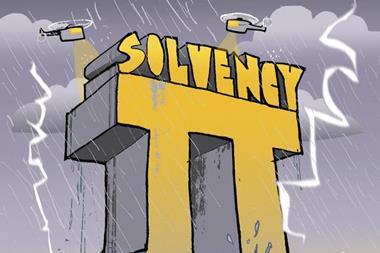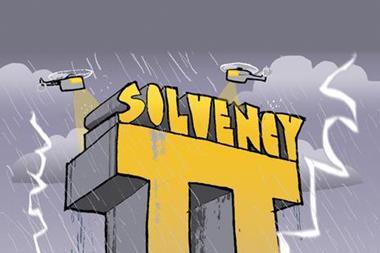Many companies still seem to be worryingly unprepared for the new rules. But the milestones towards implementation are coming up sooner than you think
Solvency II is quickly moving from ‘on the horizon’ to ‘need to act’ across the European insurance landscape, and with good reason. Solvency II will have an unprecedented impact on insurance and reinsurance companies. Meeting the 2012 compliance date will require significant effort on the part of all organisations. There are interim deadlines that must be met, and the potential cost of non-compliance may be high. In addition, rating agencies will be assessing insurers’ compliance progress as an indicator of financial strength.
But beyond the change it will bring to individual companies, Solvency II has important ramifications for the global insurance market. Governments and ratings agencies around the world are watching. Will Solvency II work? Can it be used as a template or standard for multinational insurers? These regulators will be implementing similar initiatives in their respective regions, so they will be looking carefully not only at the implementation process but also at the benefits Solvency II offers both insurance businesses and their policyholders.
For the estimated 5,200 insurers and reinsurers operating in the EU that are directly affected by Solvency II, what they do now will have repercussions for years to come. The regulation presents an opportunity to establish the best practices and enterprise risk management (ERM) systems that most likely will become templates adopted by insurers worldwide.
More immediately, however, the time has come for them to act, not ruminate. No one questions the need to ensure capital adequacy, more informed risk management and more transparent financial decision-making. Those are the goals of Solvency II’s new, strengthened EU-wide requirements for capital adequacy and risk management.
Yet a recent independent research study sponsored by SunGard exploring industry preparedness for Solvency II found that one in five companies had not yet started planning for it as of spring 2010. Many companies, including their senior executives, underestimated the size of the job ahead and the impact on their organisations.
Understanding that Solvency II is critical, but not necessarily easy, here are five important things you should know:
1. Implementation milestones are coming up fast
While the calendar tells us that the deadline for Solvency II compliance is two years away, in fact, there is a series of interim mileposts that insurers need to meet between now and then. The sooner each insurer embarks upon this process, the more likely they will reach the December 2012 deadline with the requisite technology systems, risk assessment processes and capital management practices in place.
Here are some of the rapidly approaching Solvency II milestones that every insurer should have on its radar screen.
- October 2010: (Re)insurers to send QIS5 submission to national supervisors
Each re-insurer, and thereby the insurers they represent, needs to have substantiated that they have the capital on hand to cover damages for the risk they have assumed. This documentation should be submitted to the designated country supervisor for Solvency II.
- November 2010: (Re)Insurance groups to send QIS5 results to Ceiops
After reviewing the submissions for individual reinsurers, the country supervisors will have submitted their findings to the EU governance board Ceiops.
- February 2012: Adoption of third-country equivalence proposal
Insurers must have available resources sufficient to cover both a minimum capital requirement (MCR) and a solvency capital Rrequirement (SCR). This requires that each insurer’s capital reserves to risk ratio is equivalent to a pre-set standard for another insurer to come in and assume that risk. Insurers will need to set up a formula to quantify their capital reserves and then submit their calculations to their local country supervisor.
- 31 October 2012: Solvency II implementation date
Insurers should have everything in place – people, processes and information systems – in order to comply with Solvency II at this time. They should have met all the mileposts listed above and submitted an Own Risk and Solvency Assessment (ORSA) as well. All of their paperwork should be acceptable to both their local country supervisors as well as the Ceiops officials.
- December 2012: Solvency II adoption complete
While December marks the final deadline for Solvency II, it’s really the embarkation point for ongoing Solvency II management. Insurers will have demonstrated that they are measuring and managing their risk and regularly reporting their findings to the relevant authorities.
Petra Wildemann is the global director of Actuarial and Solvency II Consulting Services for iWorks Prophet. Petra has extensive international experience in the insurance industry and has delivered large-scale global business and transformation programmes with Accenture, FJA and IBM and insurance customers worldwide. Prior to joining SunGard, she worked for six years at Hewlett Packard as the worldwide director for the insurance business.
Hosted by comedian and actor Tom Allen, 34 Gold, 23 Silver and 22 Bronze awards were handed out across an amazing 34 categories recognising brilliance and innovation right across the breadth of UK general insurance.












































No comments yet